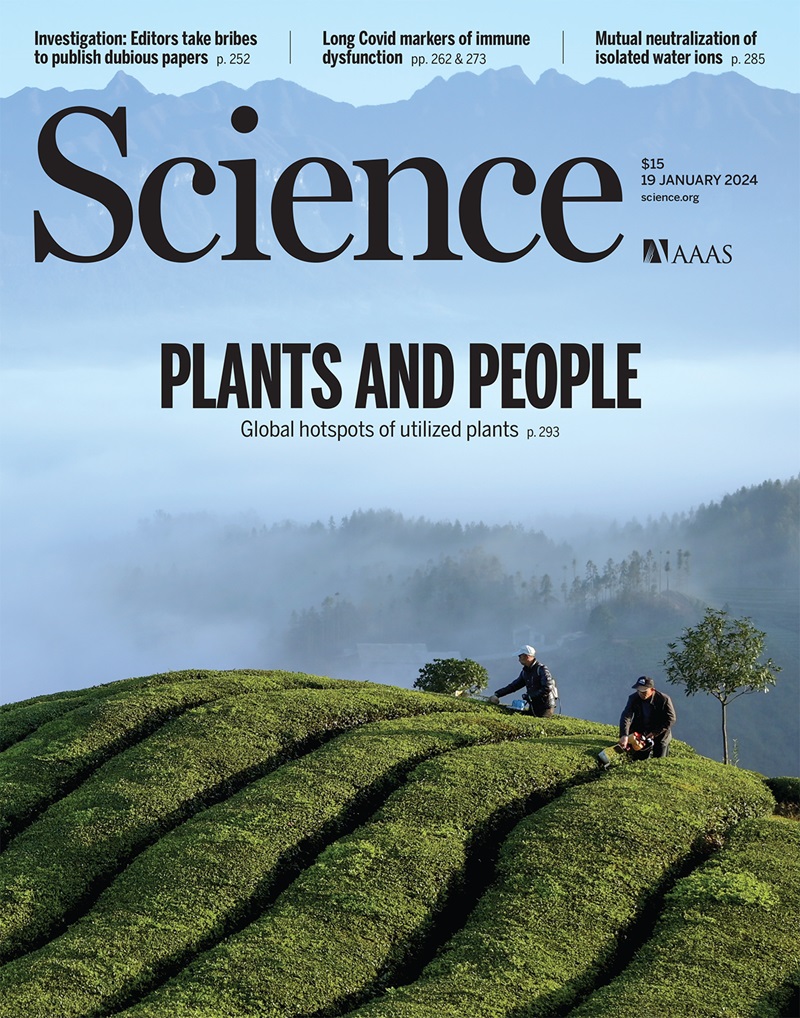Perfect Coulomb drag in a dipolar excitonic insulator
IF 44.7
1区 综合性期刊
Q1 MULTIDISCIPLINARY SCIENCES
引用次数: 0
Abstract
Excitonic insulators (EIs) are a solid-state prototype for bosonic phases of matter that can support charge-neutral exciton currents. However, demonstration of exciton transport in EIs is difficult. In this work, we show that the strong interlayer excitonic correlation at equal electron and hole densities in MoSe2/WSe2 double layers separated by a 2-nanometer barrier yields perfect Coulomb drag under zero magnetic field: A charge current in one layer induces an equal but opposite drag current in the other layer at low temperatures. The drag current ratio remains above 0.9 up to about 20 kelvin. As exciton density increases above the Mott density, the excitons dissociate into an electron-hole plasma abruptly, and only frictional drag is observed. Our experiment may lead to the realization of exciton circuitry and superfluidity.
偶极激子绝缘体中的完美库仑阻力
激子绝缘体(ei)是物质玻色子相的固态原型,可以支持电荷中性的激子电流。然而,证明激子在ei中的输运是困难的。在这项工作中,我们表明,在由2纳米势垒隔开的MoSe 2 /WSe 2双层中,在等电子密度和空穴密度下,层间的强激子相关性在零磁场下产生完美的库仑阻力:在低温下,一层中的电荷电流在另一层中诱导出相等但相反的阻力电流。阻力电流比保持在0.9以上,直到20开尔文左右。当激子密度增加到莫特密度以上时,激子突然解离成电子空穴等离子体,只观察到摩擦阻力。我们的实验可能导致激子电路和超流体的实现。
本文章由计算机程序翻译,如有差异,请以英文原文为准。
求助全文
约1分钟内获得全文
求助全文
来源期刊

Science
综合性期刊-综合性期刊
CiteScore
61.10
自引率
0.90%
发文量
0
审稿时长
2.1 months
期刊介绍:
Science is a leading outlet for scientific news, commentary, and cutting-edge research. Through its print and online incarnations, Science reaches an estimated worldwide readership of more than one million. Science’s authorship is global too, and its articles consistently rank among the world's most cited research.
Science serves as a forum for discussion of important issues related to the advancement of science by publishing material on which a consensus has been reached as well as including the presentation of minority or conflicting points of view. Accordingly, all articles published in Science—including editorials, news and comment, and book reviews—are signed and reflect the individual views of the authors and not official points of view adopted by AAAS or the institutions with which the authors are affiliated.
Science seeks to publish those papers that are most influential in their fields or across fields and that will significantly advance scientific understanding. Selected papers should present novel and broadly important data, syntheses, or concepts. They should merit recognition by the wider scientific community and general public provided by publication in Science, beyond that provided by specialty journals. Science welcomes submissions from all fields of science and from any source. The editors are committed to the prompt evaluation and publication of submitted papers while upholding high standards that support reproducibility of published research. Science is published weekly; selected papers are published online ahead of print.
 求助内容:
求助内容: 应助结果提醒方式:
应助结果提醒方式:


